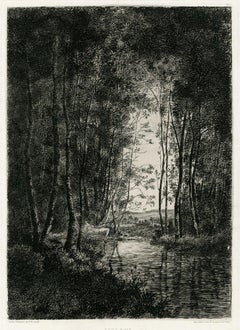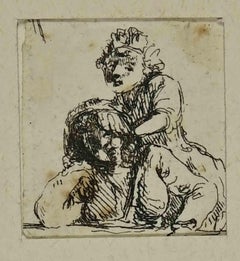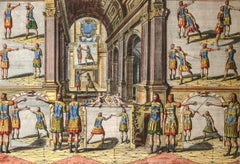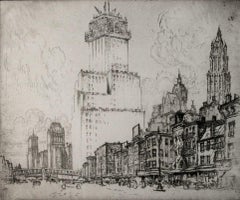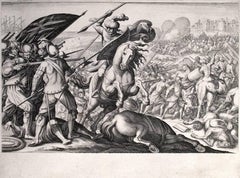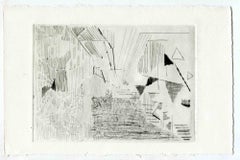Engraving Prints and Multiples
Late 19th Century French School Engraving Prints and Multiples
Handmade Paper, Engraving, Etching
19th Century Old Masters Engraving Prints and Multiples
Engraving
17th Century Other Art Style Engraving Prints and Multiples
Engraving
Early 20th Century American Modern Engraving Prints and Multiples
Drypoint, Etching
17th Century Baroque Engraving Prints and Multiples
Engraving
Mid-20th Century Modern Engraving Prints and Multiples
Drypoint, Etching
1630s Engraving Prints and Multiples
Engraving
1880s Impressionist Engraving Prints and Multiples
Drypoint, Etching
1920s American Impressionist Engraving Prints and Multiples
Drypoint, Etching
1950s Modern Engraving Prints and Multiples
Drypoint, Etching
1950s Modern Engraving Prints and Multiples
Wood, Archival Paper, Engraving
Early 20th Century American Modern Engraving Prints and Multiples
Handmade Paper, Drypoint, Etching
Early 20th Century American Modern Engraving Prints and Multiples
Handmade Paper, Drypoint, Etching
16th Century Old Masters Engraving Prints and Multiples
Engraving
Early 2000s Contemporary Engraving Prints and Multiples
Mezzotint
1970s Abstract Engraving Prints and Multiples
Etching, Drypoint
Early 20th Century Dutch School Engraving Prints and Multiples
Drypoint, Etching
Early 1800s Other Art Style Engraving Prints and Multiples
Engraving
16th Century Realist Engraving Prints and Multiples
Engraving
1970s Contemporary Engraving Prints and Multiples
Engraving, Etching, Printer's Ink, Archival Paper, Aquatint
21st Century and Contemporary Contemporary Engraving Prints and Multiples
Aquatint, Intaglio, Etching, Drypoint, Paper
Early 1900s Symbolist Engraving Prints and Multiples
Engraving
1940s Impressionist Engraving Prints and Multiples
Engraving
1820s Realist Engraving Prints and Multiples
Engraving
Early 20th Century American Realist Engraving Prints and Multiples
Drypoint
Mid-19th Century Romantic Engraving Prints and Multiples
Engraving
Late 18th Century Engraving Prints and Multiples
Engraving
Early 2000s Modern Engraving Prints and Multiples
Mezzotint, Etching
19th Century Old Masters Engraving Prints and Multiples
Engraving
Late 19th Century Victorian Engraving Prints and Multiples
Engraving
2010s Contemporary Engraving Prints and Multiples
Mezzotint
1990s Pop Art Engraving Prints and Multiples
Drypoint, Etching
1930s American Realist Engraving Prints and Multiples
Drypoint
1920s Symbolist Engraving Prints and Multiples
Engraving
1930s Modern Engraving Prints and Multiples
Etching, Drypoint
1970s Contemporary Engraving Prints and Multiples
Silver
1920s Other Art Style Engraving Prints and Multiples
Etching, Drypoint
16th Century Old Masters Engraving Prints and Multiples
Engraving
Early 19th Century Naturalistic Engraving Prints and Multiples
Engraving
1790s Engraving Prints and Multiples
Engraving, Etching
Early 2000s Contemporary Engraving Prints and Multiples
Watercolor, Paper, Drypoint
18th Century French School Engraving Prints and Multiples
Watercolor, Engraving
Early 19th Century Naturalistic Engraving Prints and Multiples
Engraving, Aquatint
Mid-18th Century Naturalistic Engraving Prints and Multiples
Engraving, Mezzotint
1690s Engraving Prints and Multiples
Engraving
Mid-19th Century Naturalistic Engraving Prints and Multiples
Engraving
16th Century Old Masters Engraving Prints and Multiples
Engraving
1820s Naturalistic Engraving Prints and Multiples
Engraving
Late 20th Century Contemporary Engraving Prints and Multiples
Mezzotint
Late 18th Century Engraving Prints and Multiples
Engraving
Early 19th Century Engraving Prints and Multiples
Engraving
1980s Contemporary Engraving Prints and Multiples
Mezzotint
1940s Cubist Engraving Prints and Multiples
Drypoint, Etching, Aquatint
Late 18th Century Naturalistic Engraving Prints and Multiples
Engraving
1760s Naturalistic Engraving Prints and Multiples
Engraving
1950s Modern Engraving Prints and Multiples
Engraving
Early 19th Century Naturalistic Engraving Prints and Multiples
Engraving
Early 2000s Contemporary Engraving Prints and Multiples
Canvas, Engraving, Screen
17th Century Old Masters Engraving Prints and Multiples
Engraving
1970s Surrealist Engraving Prints and Multiples
Drypoint, Engraving
Find Engravings and Other Fine Art Prints on 1stDibs
Art is a smart investment if the print-collecting bug has bitten you. But maybe you’re merely looking to bring art into your home — if so, engravings and other types of fine art prints can help enhance your space while supporting your effort to tie an interior design together.
An engraving is a print made by incising lines into a metal plate with a sharp tool called a burin. After the image is drawn, the plate is inked, wiped clean, and then firmly pressed to paper so the ink remaining in the incised grooves is transferred. Considerable force is required to mark the metal, so the lines made by engraving tend to be stronger than those made through etching, and characterized by gentle tapering. Light and shade have to be created through cross-hatching since the technique is line-based.
Albrecht Dürer, Pieter Bruegel the Elder, and Francisco Goya are among the Old Masters admired for their engravings, but postwar and contemporary artists have made the most of the technique as well.
Vija Celmins, for example, engraved wood to create her series of ocean surfaces, while Louise Bourgeois, who spoke about the symbolic power of engraving to convert aggression into something useful, revisited the medium throughout her long career. For Jasper Johns, recognized as one of the most innovative, masterful print artists of all time, printmaking was ideal for exploring the ideas of repetition, seriality, patterning, semiotics, order and symbolism that intrigued him. His crosshatch prints (and paintings, for that matter) are a wonderful reference to the engraving process but also a brilliant conceptual update of Abstract Expressionist brushstroke, which Johns subverted again and again.
Find engravings and other fine art prints today on 1stDibs.
Read More
Red Grooms’s 3D Tugboat Is a Chaotic, Comic Take on New York Life
The sculptural lithograph is part of the inimitable artist’s “Ruckus” series, now on view at the Brooklyn Museum.
Joan Mitchell’s Rare, Late-Career Diptych Buzzes with Life
Beneath the inky blackness, the painter’s irrepressible energy electrifies this pair of intaglio prints.
The 1stDibs Guide to Types of Abstract Art
Get to know the key movements and artists who have influenced visual culture for more than a century.
Romare Bearden’s Humanity Infuses His Bright, Bold Art
Through collage, painting and printmaking, the artist foregrounded Black life in America in revolutionary new ways.
Andy Warhol and Suzie Frankfurt’s ‘Wild Raspberries’ Cookbook Is an Artful, Fanciful Delight
This set of recipes and original prints might not make you a better chef. But it will make you smile.
Art Brings the Drama in These Intriguing 1stDibs 50 Spaces
The world’s top designers explain how they display art to elicit the natural (and supernatural) energy of home interiors.
Welcome (Back) to the Wild, Wonderful World of Walasse Ting
Americans are rediscovering the globe-trotting painter and poet, who was connected to all sorts of art movements across a long and varied career.
Shapero Modern’s Director Tells Us All about 20th-Century Prints
Tabitha Philpott-Kent knows a lot of art multiples. Here, the London gallery director talks about what makes printmaking so fabulous.
